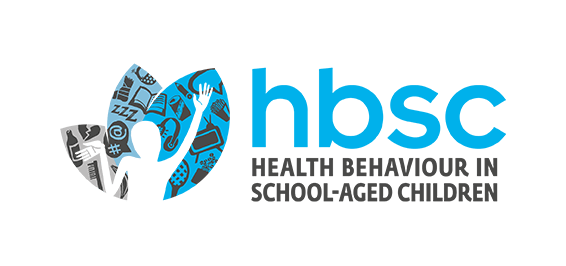HOME » PUBLICATIONS » REPORTS
Spotlight on adolescent health and well-being
Findings from the 2017/18 Health Behaviour in School-aged Children (HBSC) survey in Europe and Canada
Abstract: Health Behaviour in School-aged Children (HBSC), a WHO collaborative cross-national study, has provided information about the health, well-being, social environment and health behaviour of 11-, 13- and 15-year-old boys and girls for over 30 years. The 2017/2018 survey report presents data from over 220 000 young people in 45 countries and regions in Europe and Canada. The data focus on social context (relations with family, peers, school and online communication), health outcomes (subjective health, mental health, overweight and obesity, and injuries), health behaviours (patterns of eating, physical activity and toothbrushing) and risk behaviours (use of tobacco, alcohol and cannabis, sexual behaviour, fighting and bullying) relevant to young people’s health and well-being. New items on electronic media communication and cyberbullying and a revised measure on family meals were introduced to the HBSC survey in 2017/2018 and measures of individual health complaints and underweight are also included for the first time in the international report. Volume 1 of the international report presents key findings from the 2017/2018 survey, and Volume 2 provides key data disaggregated by country/ region, age, gender and family affluence.
Editors: Jo Inchley, Dorothy Currie, Sanja Budisavljevic, Torbjørn Torsheim, Atle Jåstad, Alina Cosma, Colette Kelly, Ársæll Már Arnarsson, Vivian Barnekow and Martin M. Weber
Topic: HBSC survey results, all topics in the Mandatory Questionnaire
HBSC data: 2017/18 and 2013/14 international files
Collection: WHO report
Report volumes
Volume 1: Key findings
Provides an overview of the key findings, highlighting important gender and socioeconomic differences, as well as changes since the previous survey in 2013/14.

Suggested citation: Inchley J, Currie D, Budisavljevic S, Torsheim T, Jåstad A, Cosma A et al., editors. Spotlight on adolescent health and well-being. Findings from the 2017/2018 Health Behaviour in School-aged Children (HBSC) survey in Europe and Canada. International report. Volume 1. Key findings. Copenhagen: WHO Regional Office for Europe; 2020.
ISBN: 978 92 890 5500 0
Volume 2: Key data
Presents data in a series of charts showing country-level and overall prevalence by age, gender and family affluence, alongside figures from the 2013/14 survey.

Suggested citation: Inchley J, Currie D, Budisavljevic S, Torsheim T, Jåstad A, Cosma A et al., editors. Spotlight on adolescent health and well-being. Findings from the 2017/2018 Health Behaviour in School-aged Children (HBSC) survey in Europe and Canada. International report. Volume 2. Key data. Copenhagen: WHO Regional Office for Europe; 2020.
ISBN: 978 92 890 5501 7
Volume 3: Methodology annex
Includes information on fieldwork dates, mode of data entry, achieved sample size, response rates; and mean age.

Language: English
From X (Twitter)
WHO/Europe and @HBSCStudy have today released the Health Behaviour in School Age Children report. This studies the physical health, social relationships and mental well-being of 227,441 schoolchildren aged 11, 13 and 15, from 45 countries.
— WHO/Europe (@WHO_Europe) May 19, 2020
👉 https://t.co/5YN9YpN9t6#teenhealth pic.twitter.com/aXzwvOx99i
Did you know, only 19% of adolescents meet the current recommendation of 60 minutes of MVPA every day. Participation is particularly low among girls from poorer families. Find out more about #teenhealth in our new report with @WHO_Europe at https://t.co/ejsWz2HvC4 pic.twitter.com/9mjZj4CA59
— HBSC Study (@HBSCStudy) June 2, 2020
When talking about their feelings, concerns + secrets, 1 in 10 adolescents preferred online communication compared to face-to-face communication. Find out more with the latest data on #teenhealth at https://t.co/lGMvxFNXrC pic.twitter.com/nN3Z21ZhJY
— HBSC Study (@HBSCStudy) May 19, 2020
Eating breakfast every school day is more prevalent among boys than girls. Gender differences increase with age. Find out more about #teenhealth in our new report with @WHO_Europe at https://t.co/3OupkOqOmX pic.twitter.com/8yws0WZaUM
— HBSC Study (@HBSCStudy) May 25, 2020
Did you know that most adolescents report easy communication with their mothers, but fewer with their fathers. Find out more about #teenhealth with data from 45 countries at https://t.co/lGMvxG5yQc pic.twitter.com/fhwN7in4A1
— HBSC Study (@HBSCStudy) May 19, 2020
27% of adolescents perceive themselves as being too fat. In the majority of countries this is more common among girls, with the gender gap increasing with age. Find out more about #teenhealth at https://t.co/lGMvxFNXrC pic.twitter.com/i8p8NBiC6W
— HBSC Study (@HBSCStudy) May 19, 2020
The latest @HBSCstudy international report, published by @WHO_Europe, reveals that only 52% of young people eat fruit or vegetables daily (52% boys, 44% girls). Find out more about #teenhealth at https://t.co/lGMvxFNXrC pic.twitter.com/HV9n1aWhNL
— HBSC Study (@HBSCStudy) May 19, 2020
Did you know, only two thirds (65%) of adolescents brush their teeth twice a day? This has remained stable since 2014. Find out more about #teenhealth at https://t.co/lGMvxFNXrC pic.twitter.com/kzd2kAFswh
— HBSC Study (@HBSCStudy) May 19, 2020
Related reports
ADOLESCENT ALCOHOL-RELATED BEHAVIOURS: TRENDS AND INEQUALITIES IN THE WHO EUROPEAN REGION, 2002–2014
OBSERVATIONS FROM THE HEALTH BEHAVIOUR IN SCHOOL-AGED CHILDREN (HBSC) WHO COLLABORATIVE CROSS-NATIONAL STUDY
Adolescent obesity and related behaviours: trends and inequalities in the WHO European Region, 2002–2014
OBSERVATIONS FROM THE HEALTH BEHAVIOUR IN SCHOOL-AGED CHILDREN (HBSC) WHO COLLABORATIVE CROSS-NATIONAL STUDY
GROWING UP UNEQUAL: GENDER AND SOCIOECONOMIC DIFFERENCES IN YOUNG PEOPLE’S HEALTH AND WELL-BEING
HEALTH BEHAVIOUR IN SCHOOL-AGED CHILDREN (HBSC) STUDY: INTERNATIONAL REPORT FROM THE 2013/14 SURVEY



